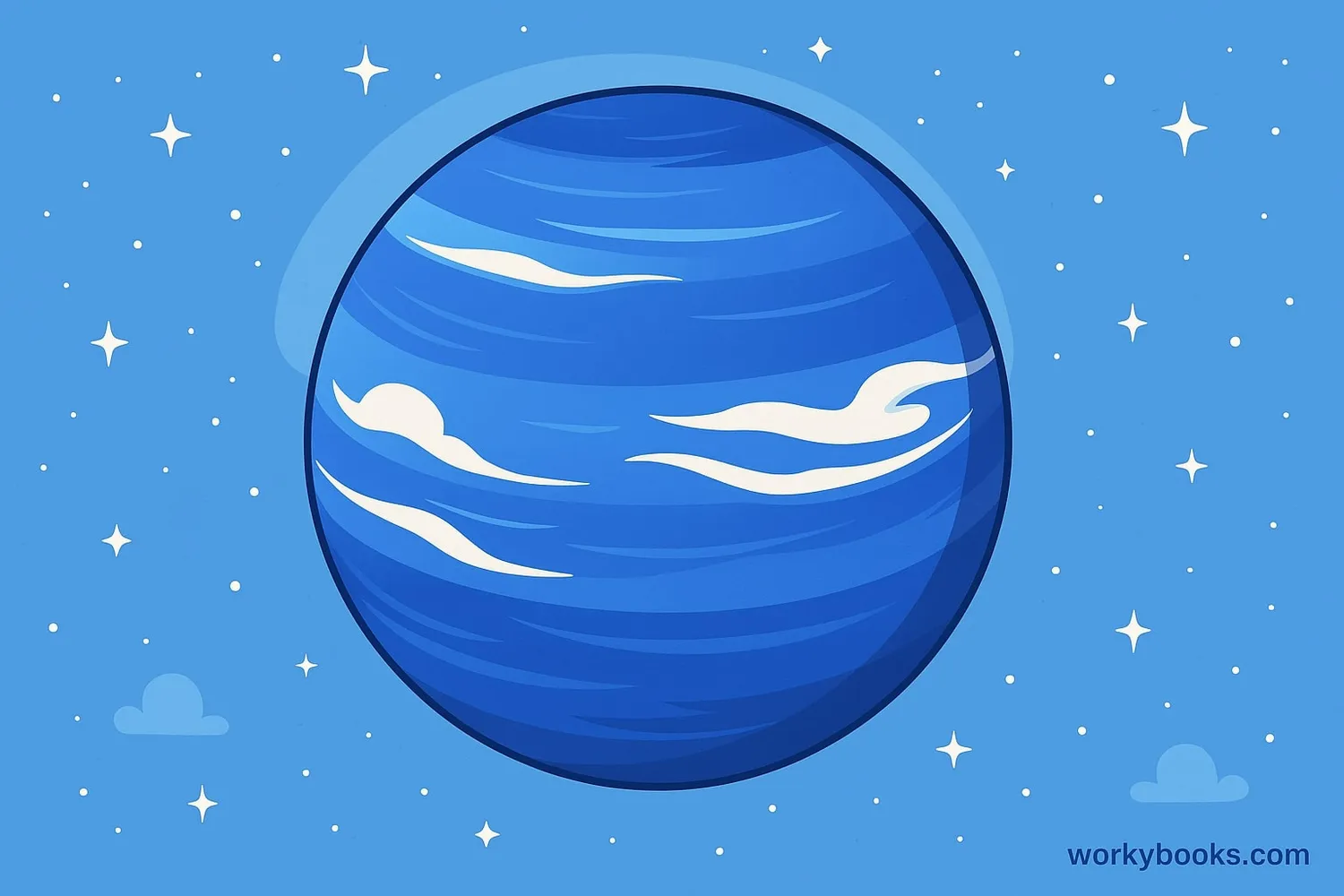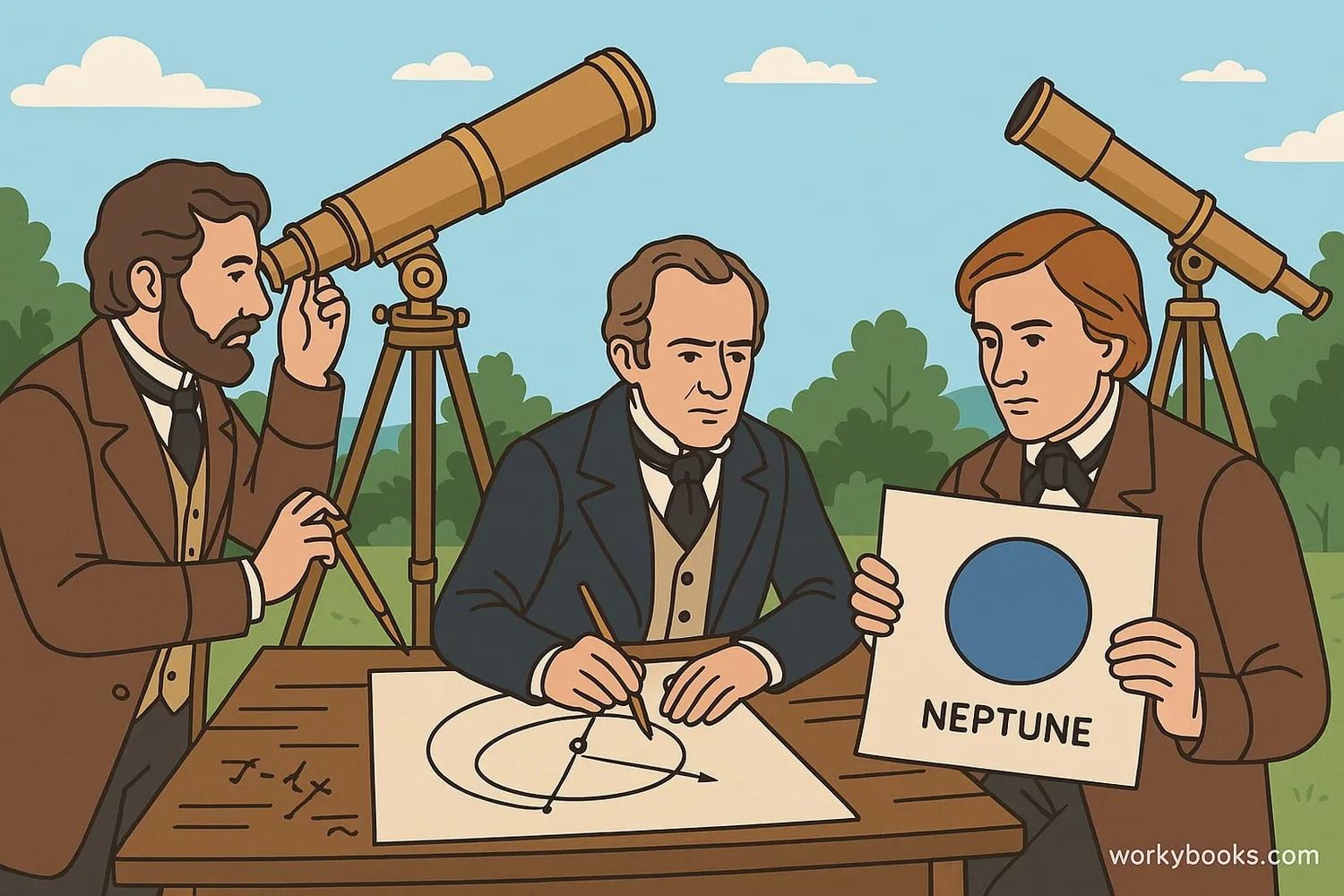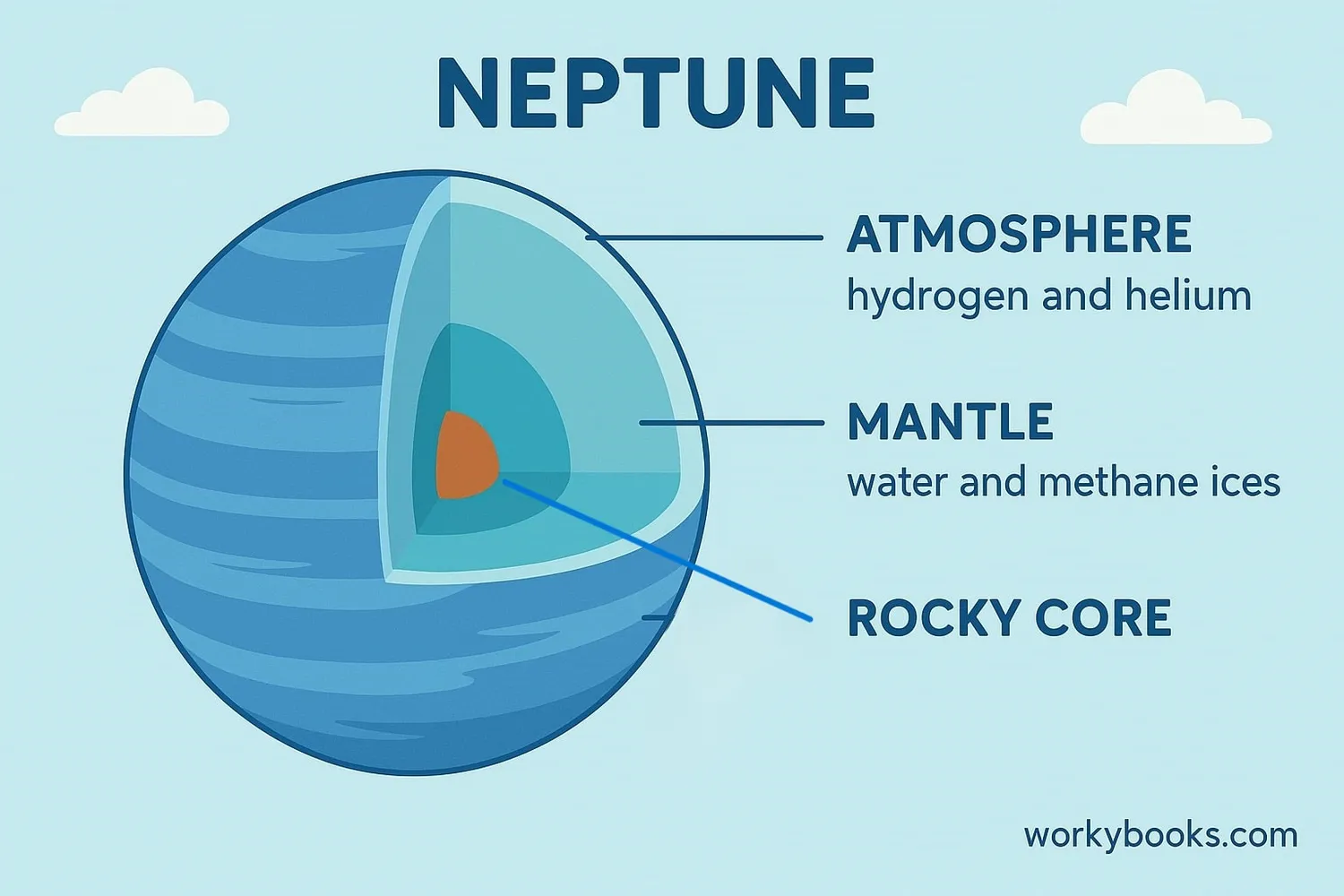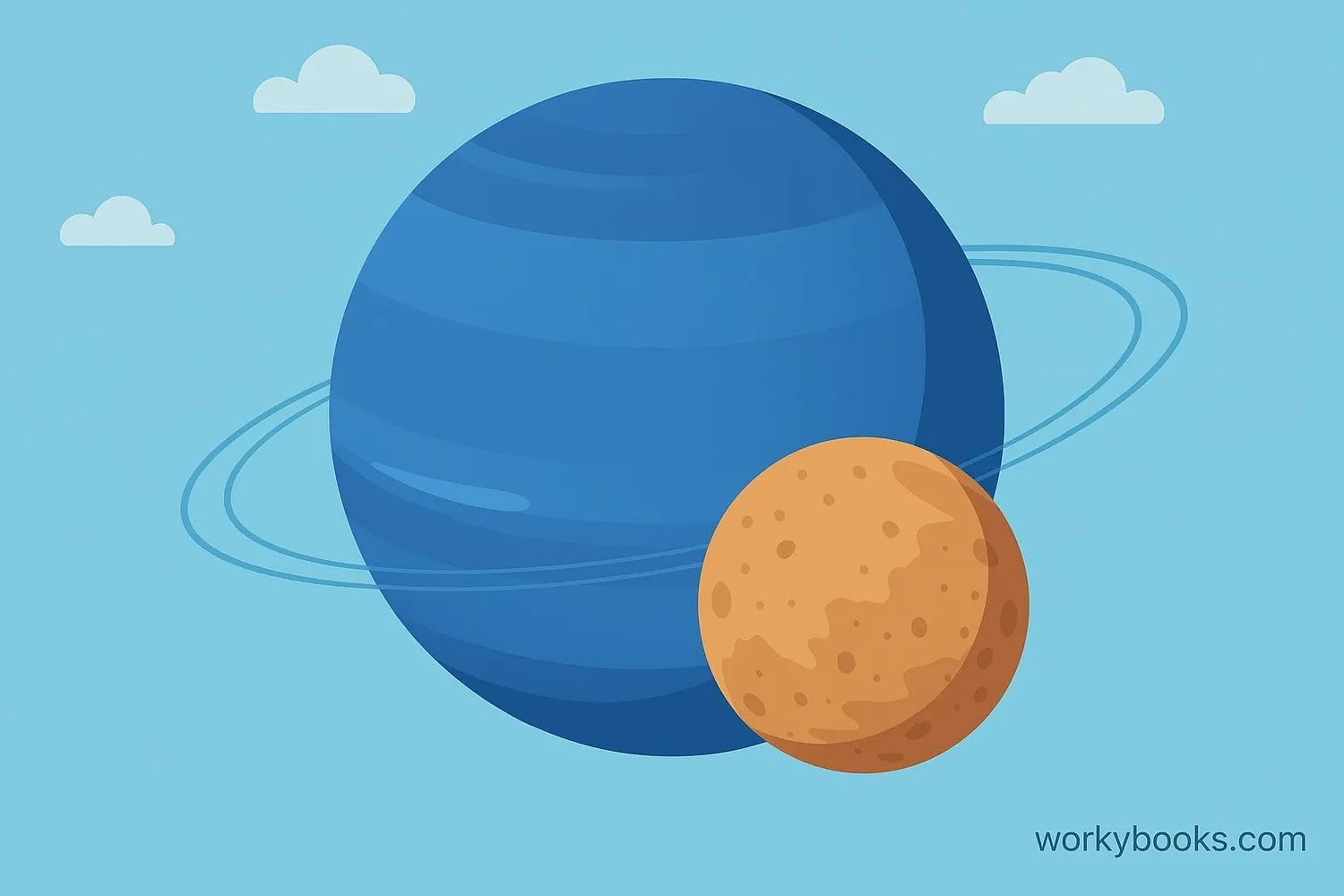When Was Neptune Discovered? - Definition, Examples, Quiz, FAQ, Trivia
Discover the eighth planet from the sun - a windy ice giant with mysterious features!
What is Neptune?

Neptune is the eighth and farthest planet from the Sun in our Solar System. It's an ice giant - a special type of planet made mostly of ices like water, methane, and ammonia, with a small rocky core.
What makes Neptune especially interesting is its beautiful blue color, which comes from the methane in its atmosphere. Methane gas absorbs red light and reflects blue light, giving Neptune its lovely blue appearance.
Neptune is about four times wider than Earth. To put that in perspective, if Earth were a tennis ball, Neptune would be about the size of a basketball!
Did You Know?
Neptune is so far away that sunlight takes 4 hours to reach it! On Earth, sunlight reaches us in just 8 minutes.
Discovery of Neptune

Neptune has a fascinating discovery story. Unlike other planets, Neptune wasn't found by accident - it was discovered using mathematics!
In 1846, astronomers noticed that Uranus (the seventh planet) wasn't moving exactly as predicted. French mathematician Urbain Le Verrier calculated that another planet must be pulling on Uranus with its gravity. He predicted where this mystery planet should be, and when German astronomer Johann Galle looked through his telescope at that exact spot in the sky, there was Neptune!
This made Neptune the first planet to be discovered using mathematical calculations rather than direct observation.
Uranus Wobbles
Astronomers noticed Uranus wasn't following its predicted path
Math Predicts
Mathematicians calculated where a new planet should be
Telescope Search
Astronomers pointed telescopes at the predicted location
Neptune Found
On September 23, 1846, Neptune was discovered
Neptune's Key Features

Neptune is full of extreme and fascinating features:
Atmosphere: Neptune has a thick atmosphere made mostly of hydrogen and helium, with about 2-3% methane that gives it the blue color.
Winds: Neptune has the strongest winds in the Solar System, reaching speeds of 1,200 miles per hour (2,000 km/h)! That's faster than the speed of sound on Earth.
Temperature: Neptune is incredibly cold, with average temperatures of -353°F (-214°C). It's one of the coldest places in our Solar System.
Diamond Rain: Deep inside Neptune, scientists believe the extreme pressure could turn methane into diamonds that actually rain down toward the core!
Weather Report
Neptune's Great Dark Spot was a massive storm similar to Jupiter's Great Red Spot, but it disappeared when Voyager 2 revisited Neptune in 1994.
Moons & Rings

Neptune has a fascinating family of moons and rings:
Moons: Neptune has 14 known moons. The largest and most interesting is Triton, which is bigger than Pluto! Triton is special because it orbits Neptune backwards (in the opposite direction to Neptune's rotation) and has icy volcanoes that spew nitrogen gas.
Rings: Neptune has at least five main rings made of dust particles. They're very faint and dark, which made them difficult to discover until the Voyager 2 spacecraft visited Neptune in 1989.
Triton Facts:
• Surface temperature: -391°F (-235°C)
• Has a thin atmosphere
• Geologically active with geysers
• May have been captured from the Kuiper Belt
Exploration of Neptune

Because Neptune is so far away, only one spacecraft has ever visited it:
Voyager 2: In 1989, NASA's Voyager 2 spacecraft flew by Neptune, giving us our first close-up look at this distant world. It discovered:
• Six new moons
• Four complete rings
• A giant storm called the Great Dark Spot
• Evidence of active weather systems
• Geysers on Triton
Voyager 2 took amazing photographs and collected valuable data during its flyby. Since then, we've studied Neptune using powerful telescopes like Hubble, but no other spacecraft has visited Neptune yet.
Future missions to Neptune are being planned, but they would take about 12-15 years to reach this distant ice giant!
Neptune Quiz
Test your Neptune knowledge with this fun quiz! Answer all 5 questions to see how much you've learned.
Frequently Asked Questions
Here are answers to some common questions about Neptune:
Fun Neptune Trivia
Discover some amazing facts about the blue planet:
Windy World
Neptune has the strongest winds in the solar system - faster than 1,200 miles per hour! That's about 1.5 times the speed of sound on Earth.
Internal Heat
Neptune radiates 2.6 times more heat than it receives from the Sun. This internal heat helps drive its extreme weather patterns and wind speeds.
Diamond Rain
Scientists believe that deep inside Neptune, the extreme pressure may turn methane into diamonds that rain down toward the core!
Cold Moon
Triton, Neptune's largest moon, is one of the coldest objects in our solar system with surface temperatures of -391°F (-235°C)!


